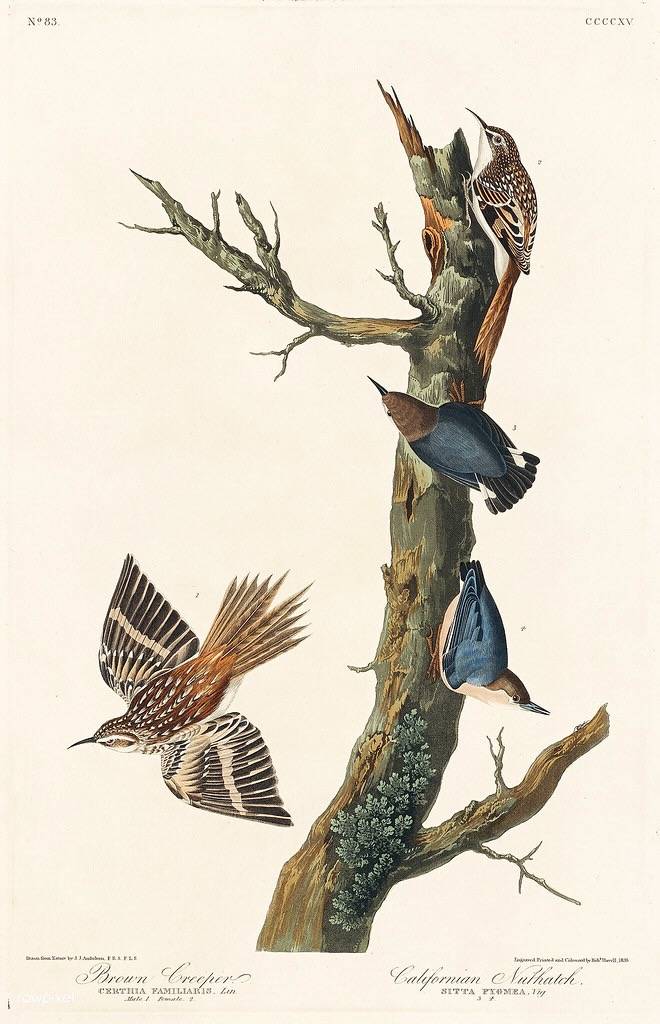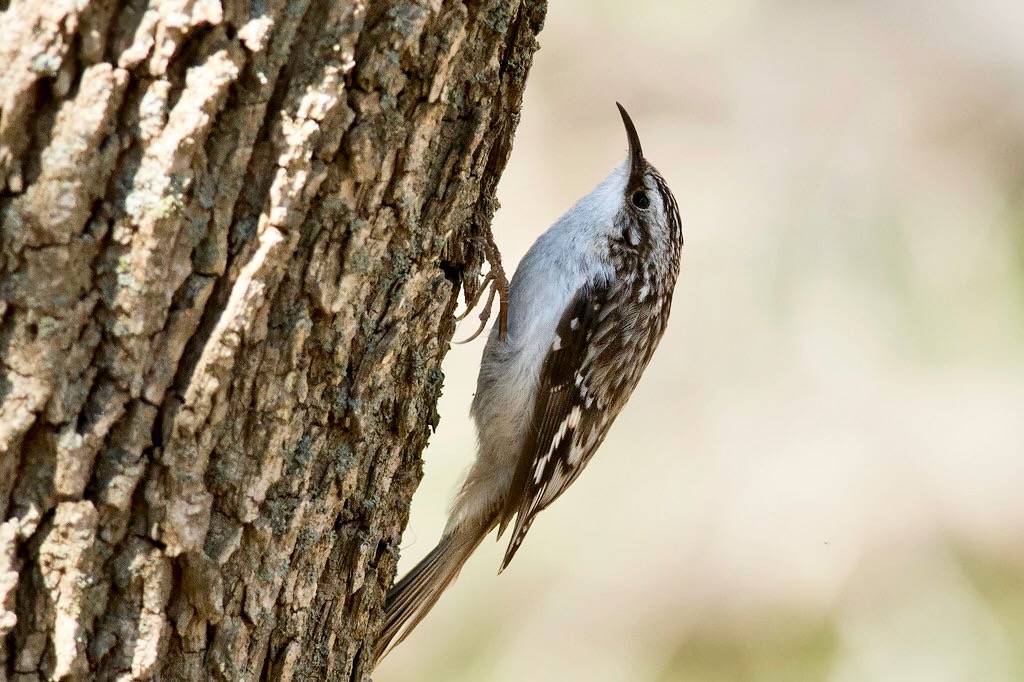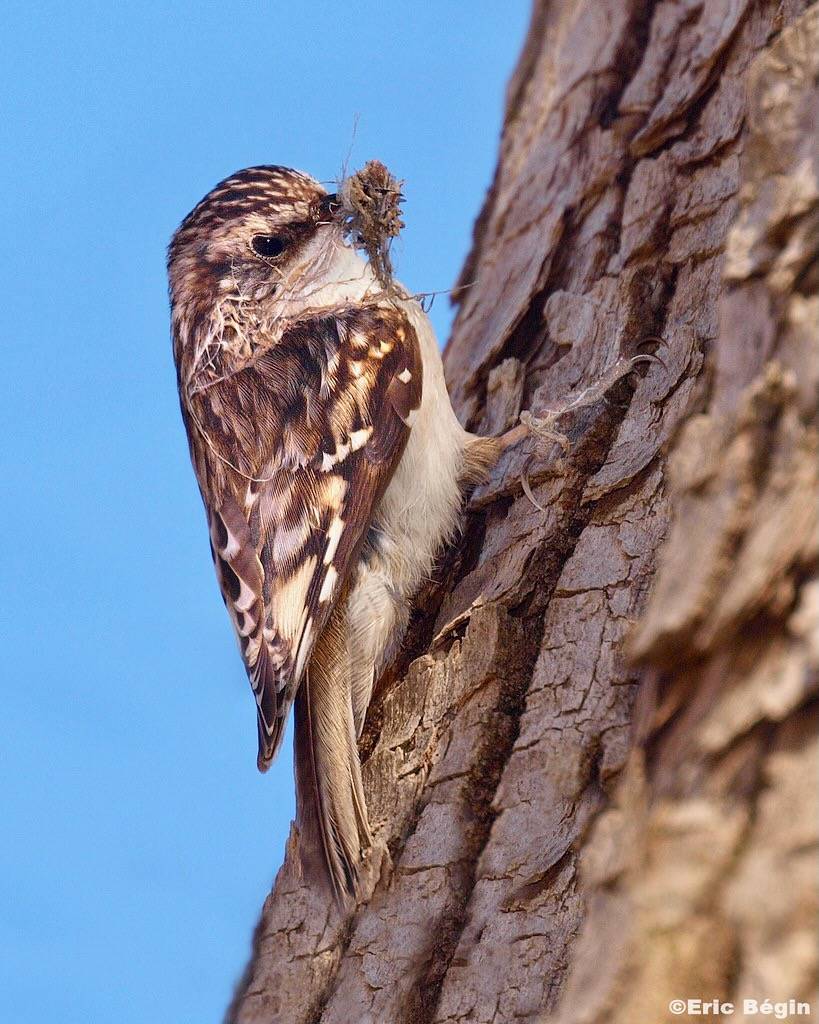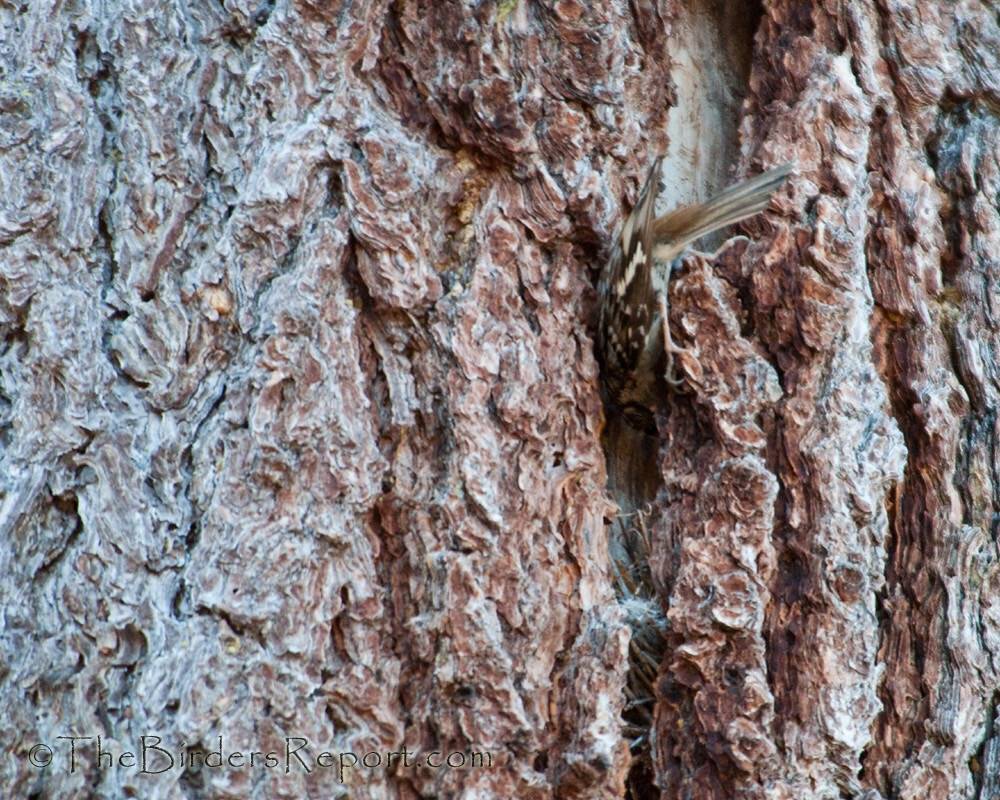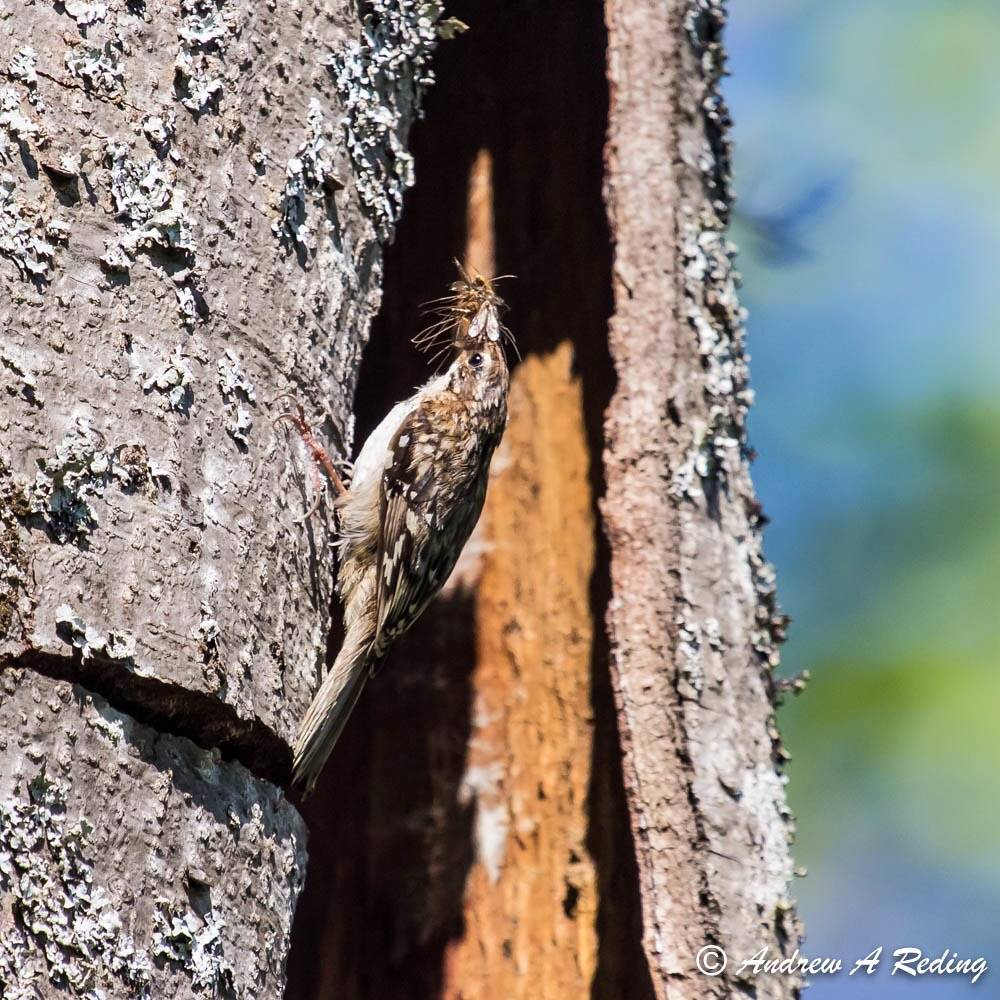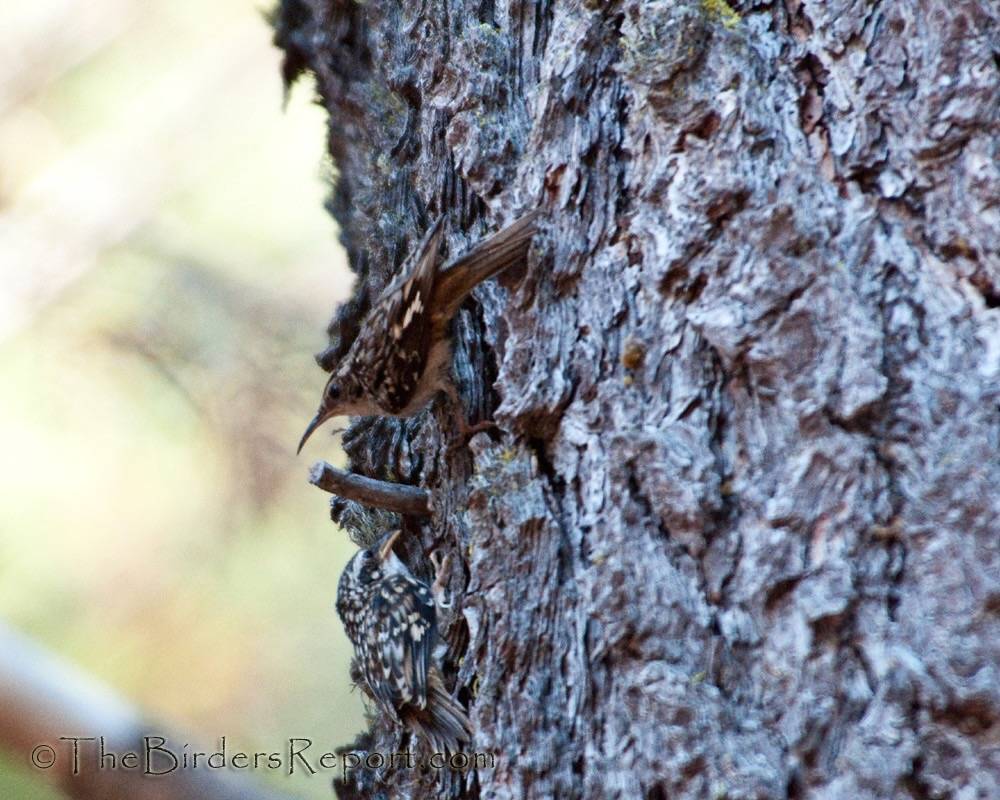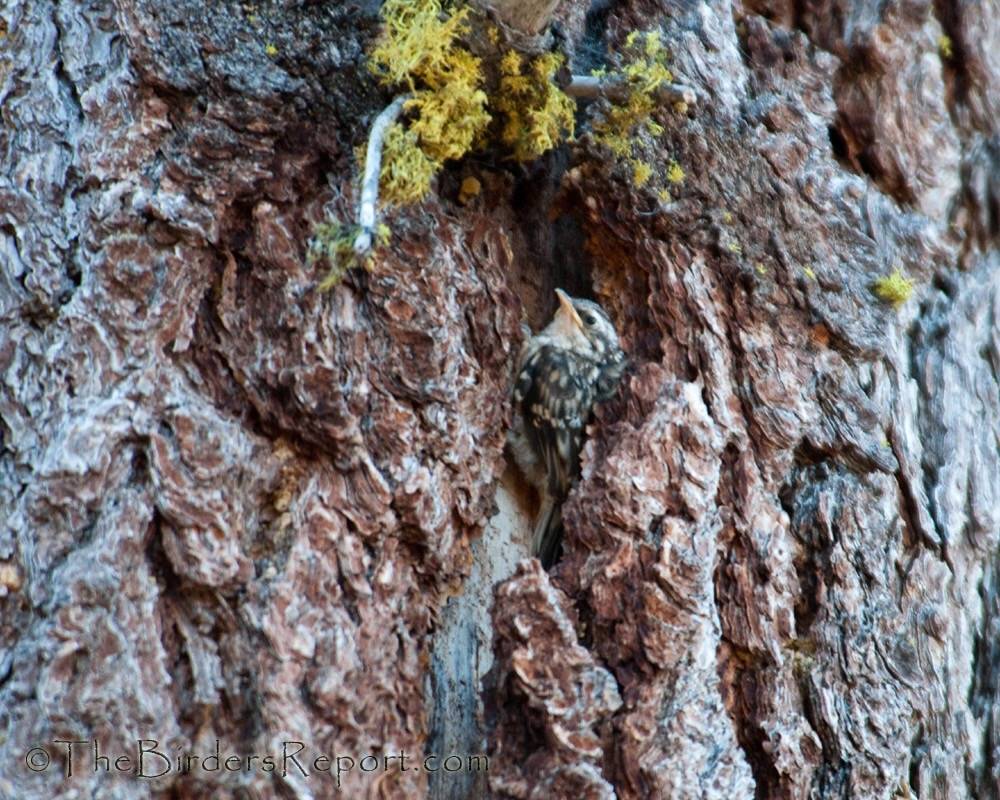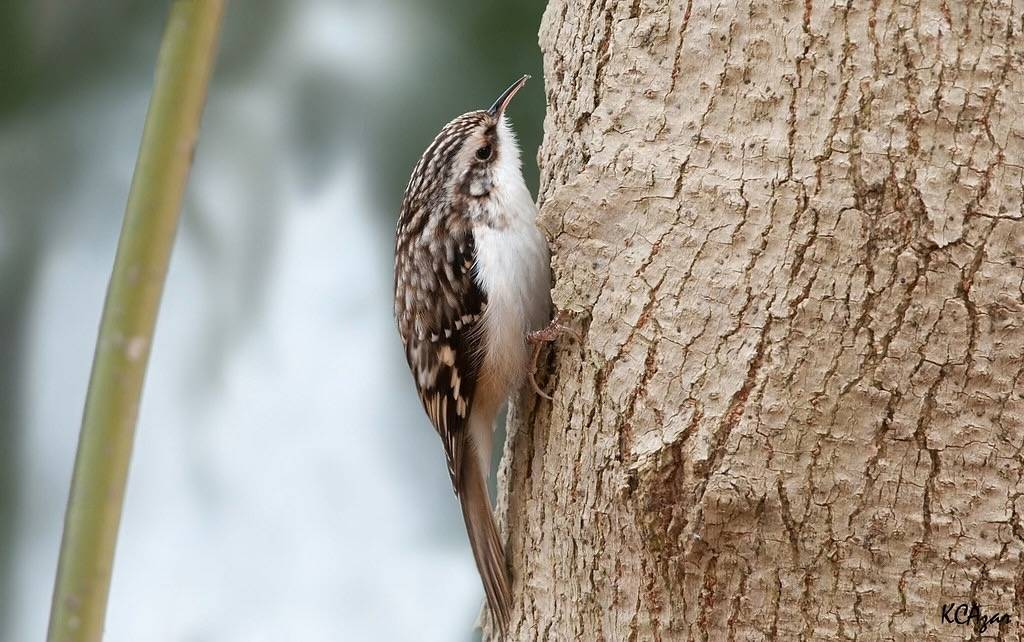Brown Creeper
Although published data exist for Salter Grove since 2006, the Brown Creeper was only first recorded in May 2022 along the Upland Trail. The individual sighted was migrating north to forests with large coniferous trees which provide both a foraging substrate as well as a nesting habitat.
The Brown creeper is easy to miss in its mottled brown plumage. It looks like an animated piece of tree bark as it spirals around a large trunk starting from the base upwards to forage for insects and spiders in the crevices of the bark. Long stiff tail feathers prop its body against the vertical trunk. The White-breasted Nuthatch has the same posture and foraging habit but has a bluish gray plumage and instead, corkscrews from the top of a tree trunk down to the bottom.
Besides depending on healthy coniferous trees for food, the Brown Creeper uniquely tucks its nest between the trunk of a decaying conifer and a slab of loose bark. Silky material from spider webs or insect pupae is used to glue together feathers, hair, leaves, lichen, mosses, and wood fibers to form a sling nest.
Brown Creepers breed throughout North America and range as far south as northern Nicaragua in forests with large conifers. They are year-round residents in the southern part of their range whereas northern populations move south for the winter. During migration, they are less particular and will forage on non-coniferous trees suggesting that there may be more sightings at the park in future.

